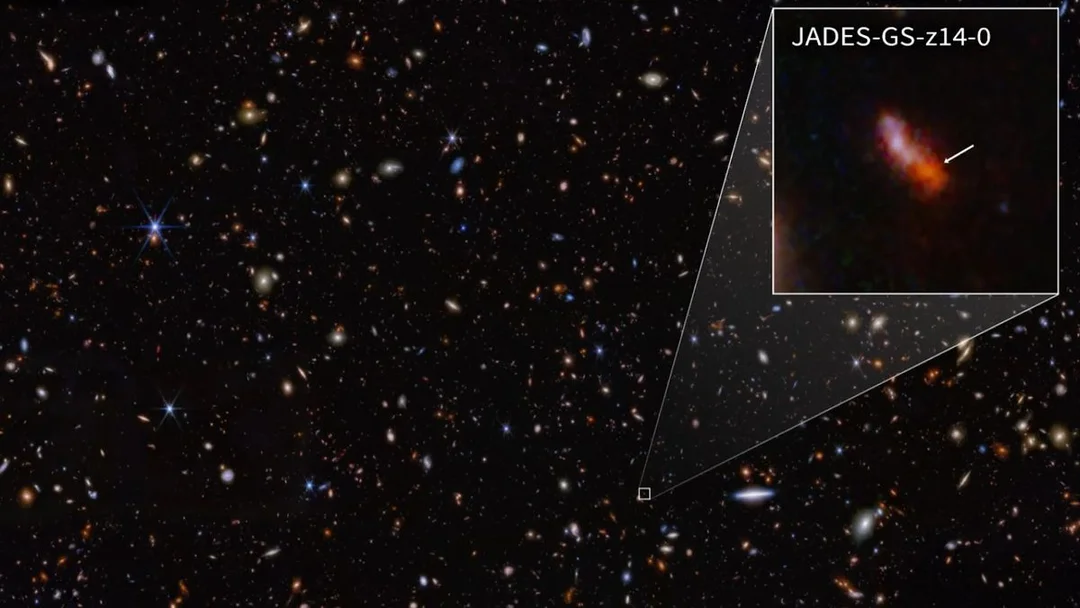
James Webb Telescope Shatters Distance Records: Unveiling the Early Universe
The James Webb Space Telescope (JWST) continues to redefine our understanding of the early universe, pushing the boundaries of observational astronomy. In a groundbreaking discovery, JWST has identified MoM-z14, the most distant spectroscopically confirmed galaxy ever observed, merely 280 million years after the Big Bang. This momentous finding, detailed in a preprint study on arXiv, underscores JWST's unparalleled capabilities and raises fundamental questions about galaxy formation in the universe's infancy.
Prior to this discovery, JWST had already shattered records by spotting more bright, ancient galaxies than scientists anticipated. The previous record holder, JADES-GS-z14-0, now takes a backseat to MoM-z14, marking another triumph for the powerful telescope. As Charlotte Mason, an astrophysicist at the University of Copenhagen, remarked to New Scientist, this discovery "confirms that there really are these very bright galaxies in the universe."

But JWST's exploration of the cosmos doesn't stop there. The telescope also captured a stunning “deep field” image of the galaxy cluster Abell S1063, located 4.5 billion light-years away. This behemoth acts as a gravitational lens, bending and magnifying the light from even more distant galaxies behind it. By utilizing this natural phenomenon, JWST can peer further back in time, revealing faint galaxies and features that would otherwise be invisible.
This deep field image, created from 9 separate snapshots totaling around 120 hours of observing time, is Webb's "deepest gaze" at a single target yet. The Near-Infrared Camera (NIRCam) played a crucial role in capturing this detailed view, allowing scientists to probe the period known as Cosmic Dawn, when the universe was only a few million years old.
MoM-z14, despite its immense distance, is relatively compact, spanning approximately 240 light-years across. The researchers observed MoM-z14 during a burst of rapid star formation. It is also rich in nitrogen relative to carbon, much like globular clusters observed in the Milky Way. These ancient, tightly-bound groups of thousands to millions of stars are thought to have formed in the first few billion years of the universe.
These findings are pivotal and challenge existing models of galaxy formation in the early universe. The team has confirmed MoM-z14's redshift as 14.44 — larger than that of the previous record holder. With the Nancy Grace Roman Space Telescope slated to launch by May 2027, scientists anticipate discovering even more distant galaxies. JWST “appears poised to drive a series of great expansions of the cosmic frontier,” paving the way for exciting new discoveries.
What other secrets of the early universe will JWST uncover? Will we soon witness the era of the very first stars? Share your thoughts and predictions in the comments below!